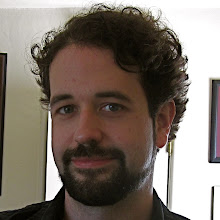In this chapter the authors attempt to expand the concept of UbD planning to the broader sphere of entire curricula and programs. This is something that ARISE is already doing, attempting to unite all of the classes faced by each grade level under a common set of essential questions. In the case of my 9th graders, as mentioned before, these questions are: Who am I? Where are we going? What are the tools that will help us get there?
I like the idea of organizing the curriculum this way, and it has certainly helped me to better arrange my content in a way that will be engaging (I hope) for my students. As the authors point out, the logical order in which one might lay out a summary of the knowledge in a given field is not usually the best order in which to present that material to a novice. This is something I already knew on some level -- witness my rejection of the cell-first approach to teaching biology that has been used in so many courses and textbooks. However, the order that I had first planned on presenting the material -- focusing on ecology, then physiology, then evolution -- may have been appropriate for a storytelling-based approach to biology, but it wasn't the best approach for a bunch of 9th graders who are primarily interested in what's happening to their own bodies.
I found this chapter to be a lot harder to get through than most of the previous chapters. The authors, having made their central points in the earlier portions of the book, seem to be flailing around at this point, presenting their ideas in a haphazard way and delving too far into extraneous details. The three-page recapitulation of a rubric for scientific inquiry was almost ridiculously excessive, and probably should have been relegated to an appendix; they talk at great length about "scope and sequence" curriculum planning without ever defining it; and most of the ideas presented in the chapter have been adequately addressed earlier in the book.
That said, there are some good points in here. One that jumped out at me was the example of software manuals: Most complex software programs come with "Getting Started" guides to get people working on the basics quickly and tutorials to walk them through more complex features; the reference manual, if it exists at all, is a separate document designed to be called upon only when needed. (Most programs nowadays, in fact, eschew reference manuals entirely in favor of complex Help menus.) As the authors point out, many elementary students are able to master quite complex software using this approach, while high school students are baffled by the linear, fact-driven presentation of science and history.
It's an important lesson, and one that already has me thinking about the 10th-grade physics class that I'll be teaching next semester. The focus of that class is on Newtonian mechanics, simple machines, and thermodynamics, and I'm beginning to think it might be wise to have the students discover Newton's laws by observation and measurement before having them described. The tricky part will be figuring out how to allow them to explore those laws, given the messy and complicated systems that are available to us in the real world. Hmm ... I wonder how much an air track costs...
Subscribe to:
Post Comments (Atom)

1 comment:
One thing that I have appreciated is seeing the evolution of YOUR thinking about teaching throughout the UbD unit. I am very interested to see how you design the physics unit after this semester with the 9th graders and biology. Continually asking yourself, "What seems to be working here? How do I know? What could improve on what's going on?" are key questions that will keep moving your teaching forward.
Post a Comment